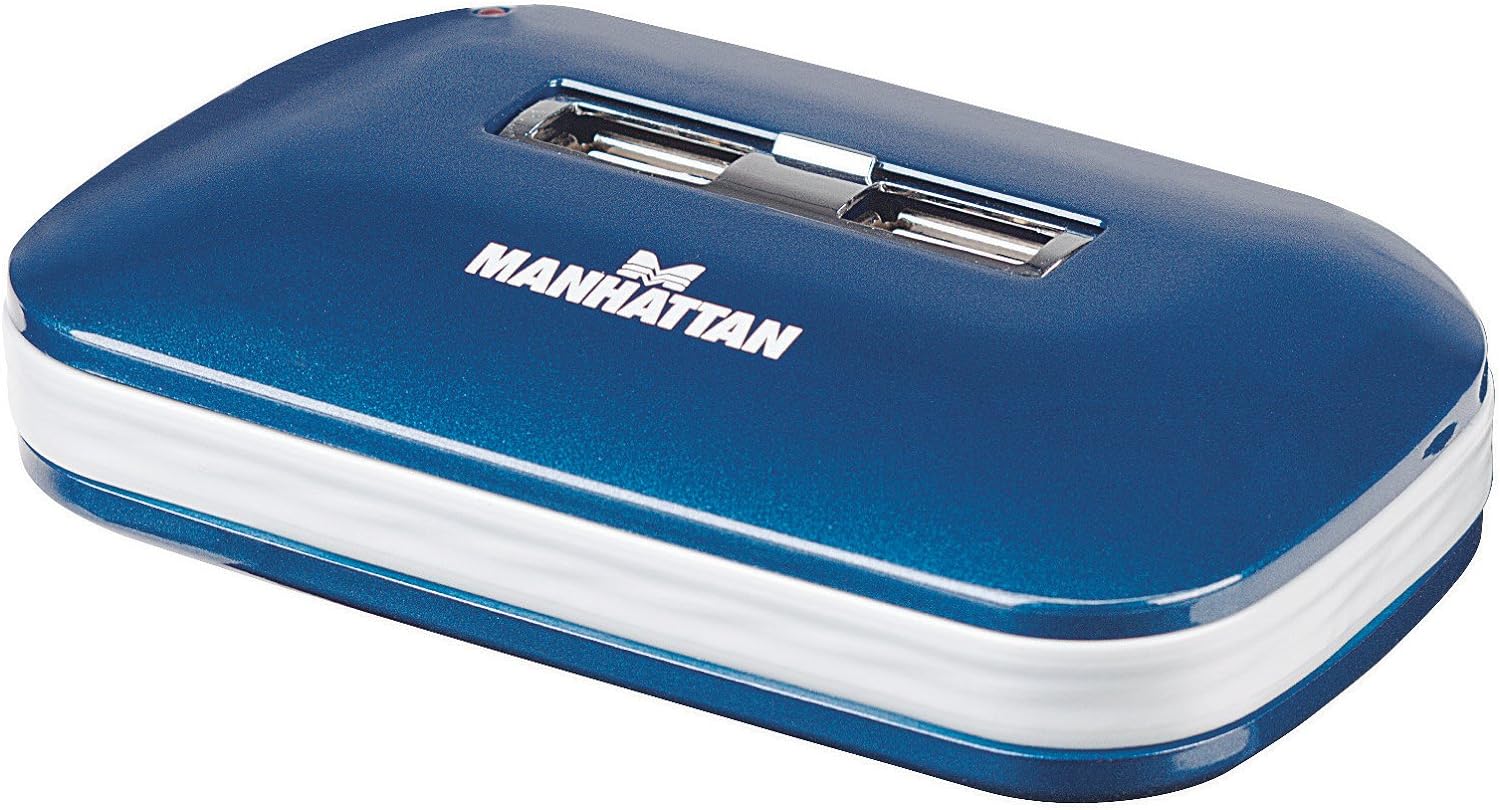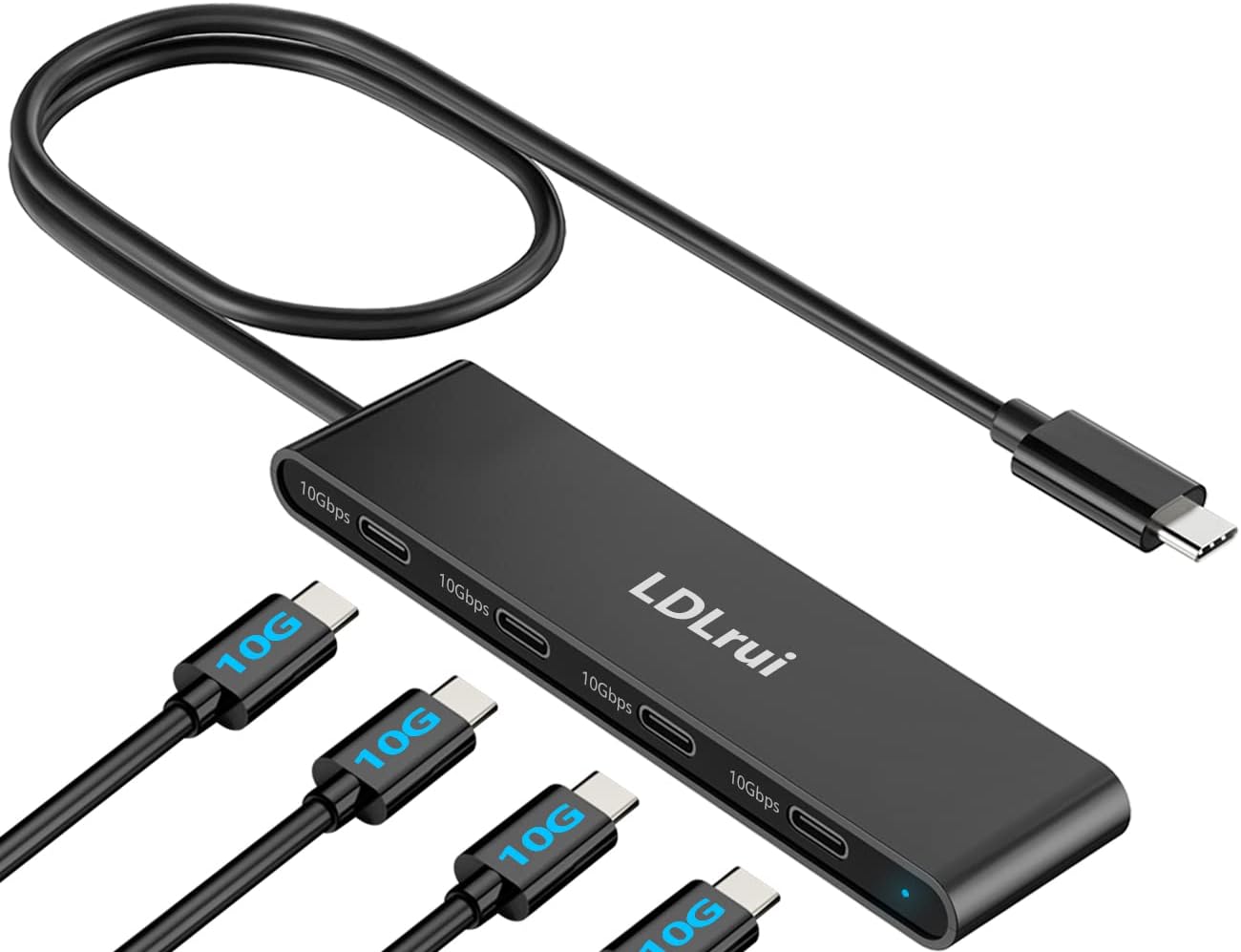USB 2.0 and multi-TT
Its common to use USB hubs when adding multiple dongles. However, it is important to know certain USB hubs can cause issues. Here we go over some common issues.
Before throwing money at new USB hubs, it may be worth verifying to see if it is the hub that is responsible for your issues!
Causes of issues with USB
Bad Power Circuits
Using USB hubs with external power supplies is generally a good thing for stability, since the source USB port may not be able to deliver power for multiple USB devices in a hub (this matters even outside of VR).
However, some USB hubs do this poorly, and end up injecting power to the motherboard, which can cause a host of strange issues. A sure fire way to check if this is happening is the plug in the hub into the PC, unplug the PC itself from power but leave the USBhub attached to power itself. If there are any lights or signs of activity from your PC, then its a likely sign that the USB hub isn't separating power well.
STT Hubs
When it comes to USB 2.0 signaling, the 2 types of hubs to be aware of are STT (Single Transaction Translator) hubs and MTT (Multiple Transaction Translator) hubs (also call single-TT and multi-TT respectably). STT hubs tend to be much more common as they tend to be cheaper.
Short Answer: the difference is MTT hubs are better at handling multiple high bandwidth USB 2.0 devices (notably SteamVR dongles) than STT hubs.
Long Answer...
USB 2.0 has 3 operating speeds in its specification: Low (1.5mbps), Full (12mbps), and High (480mbps). Watchmen dongles are "full" speed USB 2.0 devices, but are persistent in using close to the bandwidth limit of that speed.
STT hubs have a single Transaction Translator (Single TT), and thus can only negotiate a speed upstream as the slowest device that is connected to them. So if you have a mouse or keyboard attached to the hub as well running at "Low" speed (even USB 1.1 speeds), then all the other ports (including your dongles!) will have their speed drop as well, and they can no longer operate as intended. This leads to that characteristic jittery movement in bad SteamVR setups.
MTT hubs have a TT per port, and thus they do not need to drop the speed of everyone if one device in the chain is slower
Technically speaking, if you have only dongles on your STT hub you would avoid this issue, but STT tends to still be bad at handling the large amount data that watchmen dongles send. You may see problems past 2-3 dongles on an STT hub anyways.
That being said, some users have posted anecdotal evidence that their modern STT device handles a handful of dongles just fine, so if your current STT hub isn't causing any problems with your setup, I wouldn't worry. There are a plethora of USB controller chips out there, with some better than others, so while MTT is a very large factor, its not the only one.
To check if you have a MTT hub or not, I would recommend the tool USBTreeView as the easiest way to verify
(This is an old app so smart screen may probe you about this).
Select your USB 2.0 Hub, and scroll to the "USB Hub Capabilities" section, there you will see if the hub is MTT compatible
USB 3 Shenanigans
A common theme floating around is that USB 3.0 hubs are inherently bad for SteamVR dongles. This is technically not true, but this rumor probably did not spring up by accident.
A key thing to know is that USB 3.x is basically independent of USB 2.0. It uses different wires in the ports, and it uses separate controllers. That means a USB 3.x hub controller chip technically consists of a USB 3.x bus plus a USB 2.0 bus, and usually companies cheap out on the USB 2.0 portion (which is likely responsible for the above myth).
Since USB 3.x is completely independent, it also means that the throughput of the USB 3.x version you have is completely irrelevant to your USB 2.0 watchmen dongles. It doesn't matter if your hub / port is a USB 3.0, 3.1, 3.2x2, or whatever the hell the USB naming convention is this year is. The only thing that matters in a USB 3.x hub is the USB 2.0 bus.
In addition, early USB 3.0 hubs emitted electric noise that would cause interference with wireless 2.4ghz dongles. There is more reading in the sources below, but generally this is a solved problem since this issue also made wireless 2.4 ghz (notably pretty much any wireless mouse with a dongle) unusable. Modern USB 3.x hubs shouldn't have this particular issue.
Warning about fiber USB 3.0 extension cables! Often these cables DO NOT carry the separate line for USB 2.0 communications, and thus these cables WILL NOT WORK with USB 2.0 devices such as the watchmen dongles. Read the description of the product carefully. The one exception to this I have found is any extension that makes use of the vl671 chip from via labs, which gets around the issue by multiplexing USB 2.0 data over the extension line (which is what is used in the Index, as an example).
Motherboard USB hubs
USB controllers cost money, so to save on costs, motherboard manufacturers may have a small number of actual USB controllers, but use integrated USB hubs to have more ports available to the back and front. Sometimes, these integrated USB hubs are based on problematic USB hubs as discussed above, and thus you may see problems even when plugging in your high bandwidth devices directly to the back of your PC!
A note on USB hubs with more than 4 ports
Ever wonder why a lot of USB hubs come in 4, then 7 port varieties? An odd number if you think about it.
The reason is that almost always what these hubs are doing is actually using 2 daisy chained 4-port USB hubs.

As you see in the top example, Only ports 1, 2, 3, 5, 6, 7, 8 are exposed, as port 4 is used internally to go to another hub, ergo there are 7 ports exposed. The problem with this is that now the last 4 ports are splitting bandwidth of just the last port, which is already being split. This can easily mean you are in for a bad time when trying to use high bandwidth USB 2.0 devices with them, especially if they aren't MTT.
USB hub Recommendations
Note: This is simply from research and not a guarantee that these USB hubs will magically resolve any issues. Please do your research before spending money!
BEWARE OF SILENT REVISIONS! A lot of manufacturers will update their products, including potentially downgrading their controller chip, to something inferior without any mention on their store page. This means a hub that even you personally purchased and confirmed was MTT may later not be sold as such. Stick to recent recommendations and be sure to double check your hub once you receive it just to be sure!
There are some hubs that have been shown to work that you can get if you confirmed your USB hub is the cause of tracking stability issues. As discussed above, we want to ensure it supports MTT.
The most common recommendation I see is the Manhattan 7 port hub:
Manhattan 7-port hub
I have been personally hearing about this one as well
LDLrui hub
EOZ is releasing USB hubs specifically made for Watchmen dongles as well (if you don't mind the higher cost). They also come with cable extenders to have the dongles far away from each other and keep them in an optimal upright position. You can find this here
References
USB and SteamVR:
https://www.usb.org/document-library/usb-30-radio-frequency-interference-impact-24-ghz-wireless-devices
https://discord.com/channels/849300336128032789/1146536041763831948/1146536041763831948 (from the VRCFaceTracking discord)
https://kb.atomminer.com/kb/what-are-multiple-tt-mtt-usb-hubs/
https://community.infineon.com/t5/Knowledge-Base-Articles/Single-Transaction-Translator-STT-and-Multiple-Transaction-Translator-MTT/ta-p/249361
https://www.reddit.com/r/lostcomments/comments/zrhu1m/steamvr_dongles_usb_and_multitt_hubs/




